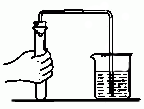Need to relax after a few stressful months? Perhaps you need to go to a spa.
First of all, what exactly is a spa? Traditionally, spas were places with a natural spring producing warm waters that could be used in hydrotherapy (水疗法) treatments. They were places where you “took the waters” --- meaning you drank some of the water or bathed in it.
But nowadays, a “spa” can mean a variety of things. In general, the term is often used to refer to commercial establishment that provides many services for health, fitness, weight loss, beauty and relaxation. This may include exercise classes, mud baths, body treatment, facials (美容), etc.
In Japan, traditional hot springs have attracted visitors for centuries. And thermal baths (温泉浴) have been found in the ruins of the Cretan Palace of Knossos (2000-1400 B.C.). It was the Romans who made spas popular in Europe. They established a number of towns around thermal waters. These include the English town of Aquae Sulis (which is called Bath today), and the Belgian town of Aquae Spadanae (which is known as Spa these days).
In the 18th century, spas became the fashionable places to go on holiday. Bath and Harrogate in the UK were popular with British rich people. And in Europe Carsbad (now called Larlovy Vary), Marienbad and Franzensbsf were Europe’s most important holiday centers.
A typical day in Carsbad in the 19th century went as follows. Visitors got up at 6:00 a.m. to take the waters and listen to music by a band. Next, came a light breakfast, a bath in the waters, and then lunch. In the afternoon, visitors went sightseeing, walked or attended concerts. After dinner, there were theatrical performances. Guests returned to their hotels at about 9 p.m. to rest until six the following morning. Visitors would stay for as long as a month. Some of the more famous patients at these spas included the composers Beethoven and Chopin, and the Russian writer Turgnev.
Marienbad was the best spa town. It was popular with the inventor Thomas Edison, the writer Johann Goethe, and many famous people and European emperors.
Today, although taking the waters isn’t as common as it used to be, spa treatments are more popular than ever.
小题1:What can we learn about a spa?
A.It makes profits mainly on facials.
B.It is a center for rich people to relax.
C.It provides more services than before.
D.It is where one can get medical treatment.小题2: From Paragraph 4, we can infer that ___________.
A.spas have a history of about 200 years
B.Japan has more spas than any other countries
C.the Romans played a positive part in the popularity of spas
D.ordinary people could enjoy thermal baths in 18th-century UK小题3: At the spas in Carlsbad, ____________.
A.many visitors had facials
B.guests often stayed for at least a month
C.Thomas Edison was a regular guest
D.guests had a bath between breakfast and lunch小题4: What can we learn from the passage?
A.The former name of Larlovy Vary was Carlsbad.
B.Spa treatments are not so popular as before.
C.Chopin visited Marienbad frequently.
D.Marienbad is located in the UK.
小题1:C
小题2:C
小题3:D
小题4:A
题目分析:本文介绍了泡温泉现在提供更多的服务。各国温泉的发展情况。
小题1:细节题:从文章第三段的内容:But nowadays, a “spa” can mean a variety of things. 可知泡温泉现在提供更多的服务。选C
小题2:细节题:从第四段的句子:It was the Romans who made spas popular in Europe.可知是罗马人在温泉流行当中起着重要作用。选C
小题3:细节题:从第六段的句子:Visitors got up at 6:00 a.m. to take the waters and listen to music by a band. Next, came a light breakfast, a bath in the waters, and then lunch.可知在Carlsbad温泉人们在早饭和午饭之间会泡温泉。选 D
小题4:细节题:从第五段的句子:And in Europe Carsbad (now called Larlovy Vary),可知答案是 A
点评:本文介绍了泡温泉现在提供更多的服务。各国温泉的发展情况。考查推理题较多,要求考生能根据上下文的语义串联和题目的具体要求,做出适当的延伸和推理。




